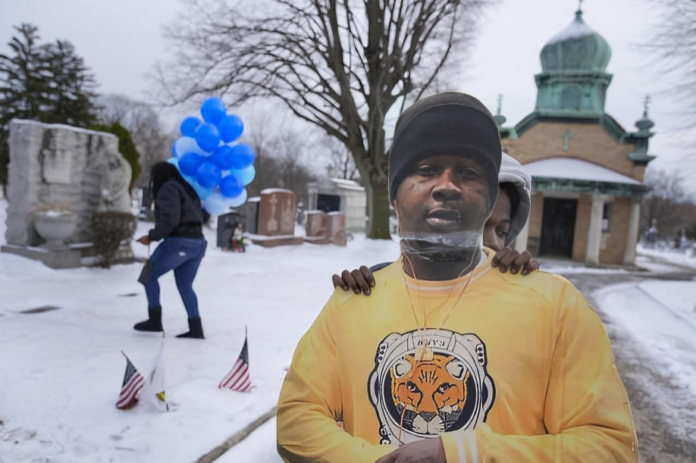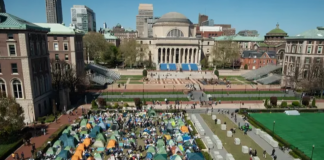The dimly lit lobby seemed to hold little hope for the tormented young man who burst through its doors in the inky blackness before dawn. Jameek Lowery was in the grip of a mental health crisis, a perfect storm of paranoia, hallucinations and anguish raging inside his 27-year-old frame. Barefoot and clad only in pajama pants and a sweatshirt, he sought refuge from an unlikely source – the Paterson, New Jersey police headquarters on that fateful January 5th, 2019 morning.
As the Black man’s cries for assistance echoed through the lobby, the unthinkable happened. Instead of receiving care, Lowery’s life was brutally extinguished after a violent encounter with the very police officers meant to protect him. His death, shrouded in controversy and allegations of excessive force, would become yet another tragic statistic – one of over 300 Black people who have died after police used force that should not be fatal.
A Troubled Past and Desperate Plea
Lowery had not led an easy life. The product of an impoverished upbringing as one of 17 children in Paterson’s Fourth Ward, he was diagnosed with bipolar disorder in childhood. His mood swings could be extreme, though medication and therapy provided some stability when adhered to strictly.
But a 2013 drug conviction and periods of unemployment took their toll. So did a growing paranoia that the local police, an institution he had learned not to trust, were out to get him. His mistrust ran so deep that by late 2018, Lowery was making plans to flee Paterson with his three children, hoping to start anew in North Carolina.
“He said they were going to hurt him,” Lowery’s sister Jamilyha later recalled about her brother’s fears of the police.
It was against this backdrop of mental fragility that Lowery placed a 911 call in the early hours of January 5th, admitting he had taken the party drug ecstasy and was feeling intensely paranoid. Paramedics took the hallucinating young man to the local St. Joseph’s University Medical Center, but discharged him after a short evaluation.
Bizarrely, Lowery then jumped on furniture in the hospital lobby until security had him put in a taxi headed back home. But at a red light downtown, he suddenly kicked out a window and bolted – making a beeline straight for police headquarters.
A Facebook Cry into the Darkness
Bursting through the doors at 3:45am, a barefoot and wild-eyed Lowery began narrating his panic on a Facebook Live video even as he pleaded with the stunned officers for help.
“Why y’all trying to kill me?” he frantically asked them between anguished breaths. “If I’m dead in the next hour or two, they did it.”
Despite his deeply-rooted mistrust of police, Lowery issued a plaintive refrain: “Help me…help me…”
At first rejecting calls to return to the hospital, Lowery ultimately relented and agreed to board the ambulance summoned by police. But what happened next in that ambulance would prove more traumatic than anyone could imagine.
A Brutally Extinguished Life
By the time Lowery arrived back at St. Joseph’s, he was unconscious and handcuffed to a gurney, his face bearing the marks of a violent struggle. Dried blood and fluids caked his eyes, nose and face, which appeared severely swollen and bruised.
Doctors grimly informed Lowery’s frantic family members, who had discovered his archived livestream video, that he had gone into cardiac arrest. His brain and vital organs had been deprived of oxygen for a perilous amount of time.
Two days later, on January 7th, Jameek Lowery’s battered body finally gave out. He was dead at 27 years old.
A Community Erupts as Officials Deflect
News of Lowery’s death under such disturbing circumstances after he had gone to police for help quickly went viral, sparking outrage among Paterson’s Black community. They rallied around viral videos showing Lowery’s eerie foreshadowing of his own death and appearance in the lobby appearing unharmed before the ambulance trip.
Hundreds of protesters descended on City Hall, waving signs reading “Justice for Jameek Lowery!” and chanting demands for answers about the brutal end to the young man’s life.
But the initial official response from authorities only inflamed tensions further. Passaic County Prosecutor Camelia Valdes incredibly claimed Lowery’s death was “a medical event and not the result of police use of force,” attributing it to a cardiac arrest while under the influence of the legal high bath salts.
Mayor Andre Sayegh fanned the flames further by suggesting Lowery had died from meningitis, not anything related to the police encounter.
A Grieving Family’s Relentless Pursuit of Truth
Lowery’s loved ones and community activists flat-out rejected the official narrative, convinced the young Black man had been the victim of excessive police force driven by racism. The mother of one of his children, Shaquana Duncan, filed a federal lawsuit alleging police had used excessive and deadly force against Lowery despite him being unarmed and posing no danger.
Duncan’s attorneys began piecing together an very different account by obtaining previously undisclosed police reports and other documents. They hired renowned forensic pathologist Dr. Michael Baden, who had performed the second autopsy on George Floyd, to investigate Lowery’s cause of death.
What Baden found was extraordinarily disturbing. His own autopsy showed Lowery had suffered severe blunt force trauma to his face, jaw, arms and chest, as well as telltale signs of strangulation from compressive choking. X-rays revealed multiple fresh fractures to fingers on Lowery’s left hand, contradicting official claims of no broken bones.
Hospital records noted Lowery had arrived bleeding from his nose and mouth, with obvious facial bruising and a notated “question of possible assault.” Baden’s investigation concluded Lowery had been beaten into cardiac arrest and kidney failure by the very police officers who restrained him – essentially suffering a homicide.
The Harsh Light on a Troubled Police Force
The glaring inconsistencies between the official accounts and Baden’s findings threw harsh light on the Paterson Police Department’s long-troubled relationship with the city’s Black community. Tensions had flared for decades, dating back to the 1960s civil rights era clashes and the wrongful 1967 conviction of Black boxer Rubin “Hurricane” Carter by an all-white jury.
In more recent years, the force has been plagued by allegations of discriminatory policing and lack of accountability. An outside 2022 audit found Black people accounted for 57% of the department’s use-of-force incidents from 2018-2020 despite making up only about a quarter of the city’s population.
The audit called for urgent reforms including updated force policies, improved oversight and bridging the divide with the mistrustful Black community. But advocates like Rev. Kenneth Clayton expressed deep skepticism about police willingly changing. “No one really believed that the police would hold themselves accountable,” he said.
It wasn’t until another high-profile police killing of a Black man in mental crisis, Najee Seabrooks, in May 2022 that state officials finally intervened. New Jersey Attorney General Matthew Platkin took the extraordinary step of invoking a state law to wrest control of the Paterson force from local authorities.
Platkin acknowledged the depth of the community’s distrust, telling the AP: “I don’t blame anyone who has lived in Paterson for a long period of time for being distrustful.” But he warned that reforming the dysfunctional department “won’t be quick or easy.”
A Grave Injustice Haunting a City
Lowery’s shocking death represents the worst-case scenario when a person in crisis seeks official help – receiving a brutal injustice instead of compassion and care. Five years after the young man’s life was so violently cut short, his family and supporters continue being haunted by the unanswered questions surrounding his final hours.
On a cold January day in 2024, they somberly gathered at St. Peter’s Cemetery in nearby Garfield where Lowery is interred. After prayers and sharing memories, an aunt made an impassioned cry as blue balloons were released skyward in Lowery’s honor:
“Say his name!”
The crowd replied in solemn unison: “Jameek Lowery.”
For this tight-knit New Jersey community, a young life mourned amid allegations of police brutality has become much more than a tragic statistic. Jameek Lowery’s needless death stands as a searing reminder of the deeply rooted issues surrounding police militance, weaponized against the most vulnerable in society. His story puts a haunting face on the dire need for meaningful reforms to prevent such grave injustices in the future.
Until substantive changes are made, more anguished names and devastated families will continue joining the dolorous refrain – “Say his name…” An American tragedy repeating itself, a civic scar that refuses to heal.




















